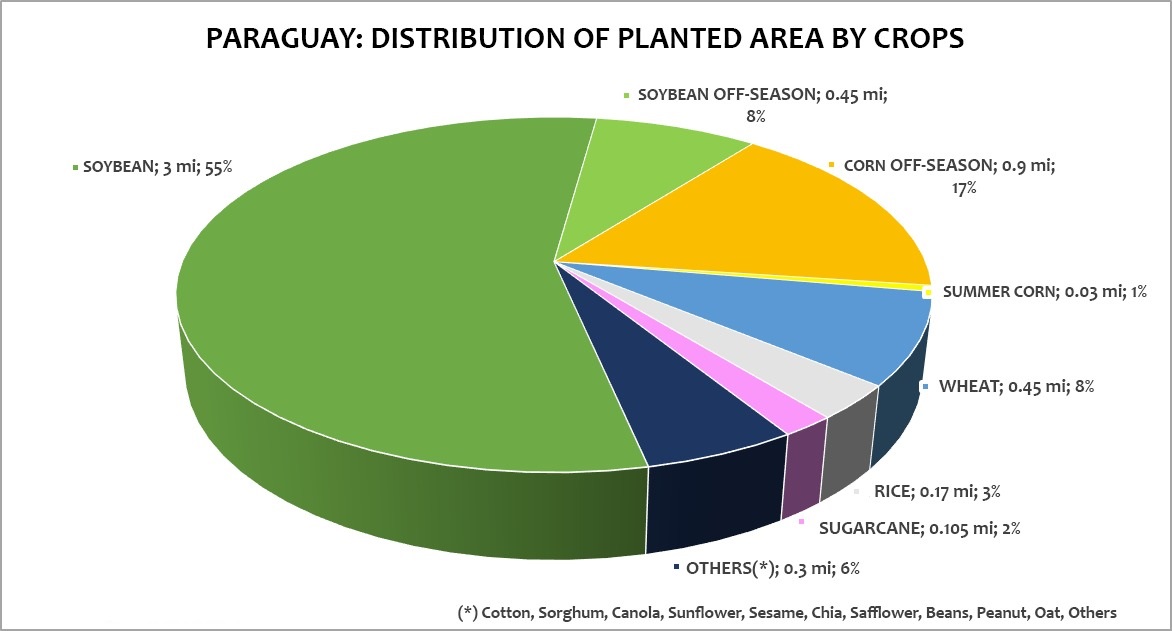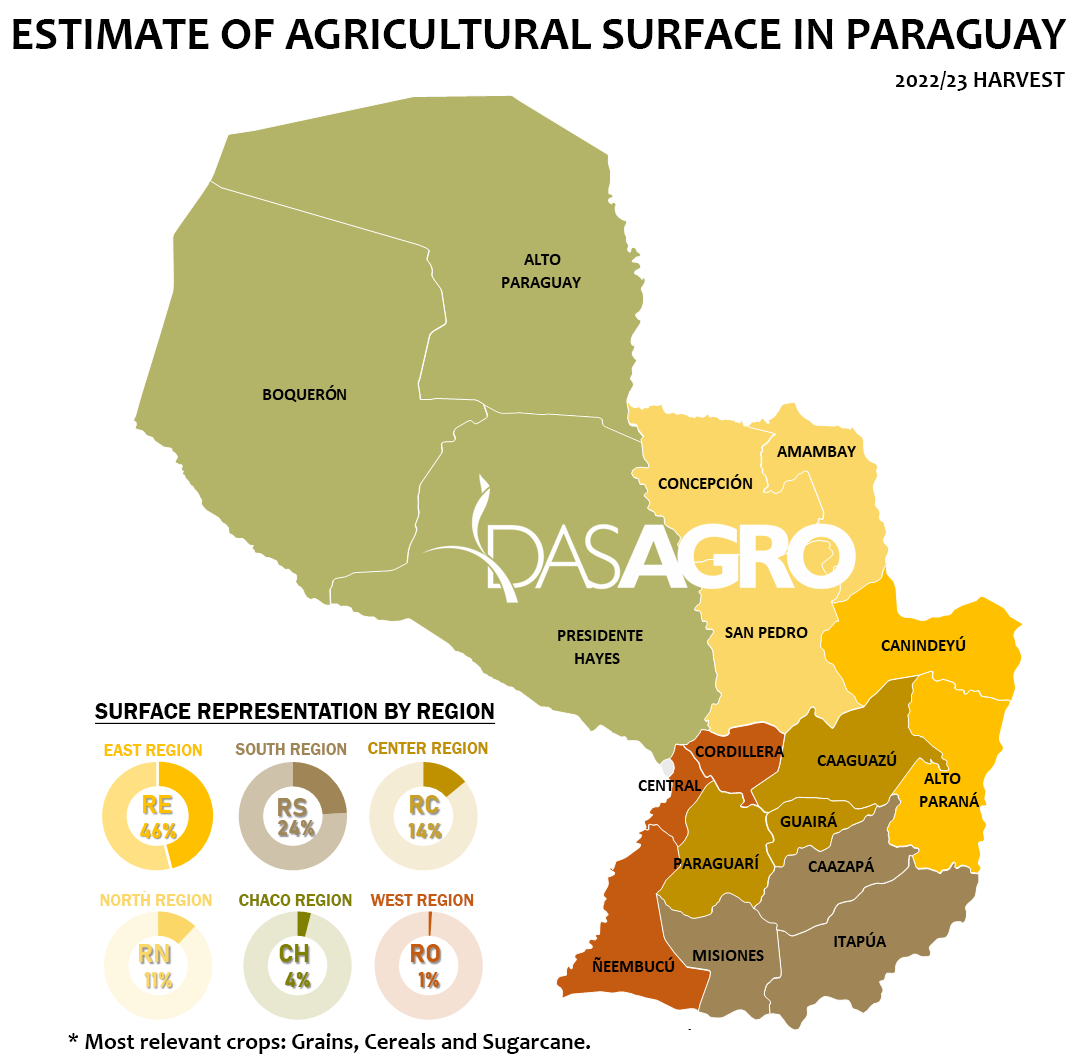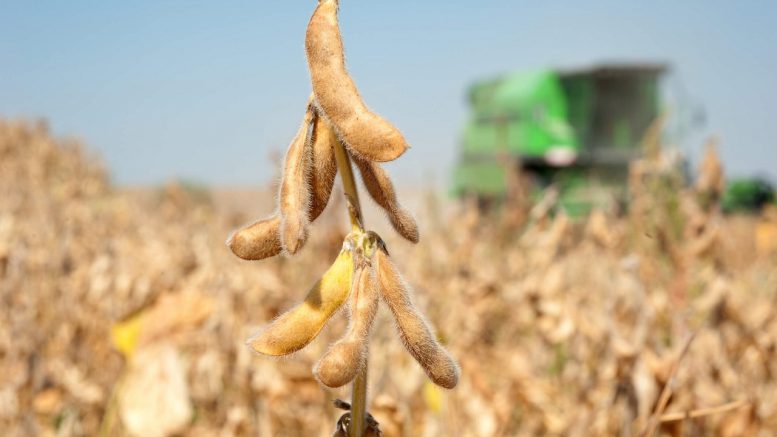“The main crops in Paraguay are soybean, corn and wheat. The most important one is soybean, sown between September and November and harvested between January and March, with an area of 3 million hectares.”
Esther Storch is the founder and director of Dasagro, she holds a degree in systems analysis and a postgraduate degree in agribusiness from the Getúlio Vargas Foundation, with a specialization from the Federal University of Paraná.
Dasagro operates in the management and commercialization of grains and derivatives in the domestic market of Paraguay and in exports.
At the end of the 2022/23 soybean planting, Paraguay had good weather conditions for sowing, with an estimated production of 9.8 million soybean tonnes. After a lack of rain period in December 2022, the production forecast was reduced to 8.4 million tonnes.

Esther Storch, founder and director of Dasagro
AgriBrasilis – What is the scenario of the main crops in Paraguay?
Esther Storch – The main crops in Paraguay are soybean, corn and wheat. The most important one is soybean, sown between September and November and harvested between January and March, with an area of 3 million hectares.
In these same 3 million hectares, the “zafriña” (off-season) or second harvest crops are planted. The second crop is planted together with the soybean harvest and in a crop rotation scheme.
The off-season soybean occupies an area of 450,000 hectares and is harvested between April and May. The off-season corn is planted on 900,000 hectares, harvested between May and August.
Wheat is sown on 450,000 hectares between April and May and harvested between September and October. In this rotation and distribution of annual plantings, there are areas where crops are planted up to three times a year. In most cases there are two annual crops on the same surface.
For the 2022/23 harvest, soybean production is estimated at 8.4 million tonnes. Afterwards, the production of off-season soybean will be added, totaling approximately 9.1 million tonnes. The corn currently being planted has an expected production of 5 to 5.5 million tonnes.
Wheat production is estimated at 1 million tonnes for 2023. In other areas, other crops of relevance to Paraguay are developed, that are mainly rice (170,000 hectares) and sugarcane (105,000 hectares).
In addition to the main crops mentioned, cotton, sorghum, canola, sunflower, peanuts, beans, chia, safflower, oats, etc. are also planted.
The country is divided into two main regions: the East Region, located between the Paraná and Paraguay rivers, and that represents 97% of the country’s agricultural area; and the West Region or Chaco, that represents 3%.
The departments with the highest production of the main crops (soybean, corn and wheat) are Alto Paraná, Itapúa and Canindeyú, with 72%. In Chaco, the largest production is found in the Central Zone, where the department of Boquerón represents 76% of the region.

AgriBrasilis – Is there potential for expansion of agricultural areas in Paraguay, as in the Chaco region? What is the importance of the border areas with Brazil?
Esther Storch – The agricultural area has a growth potential of approximately 10% in the East Region (main agricultural region) during the coming years. This growth should occur mainly in the extreme north and south in areas of livestock and floodplains.
In Chaco, the potential for growth in the area is exponential, although it occurs gradually depending on the type of soil and the technological adaptation to the region’s climate, associated with the development of the Central Bi-Oceanic Railway.
AgriBrasilis – In recent years there have been long periods of drought. What losses have occurred and what is the current situation?
Esther Storch – In the last harvest (2021/22) the drought lasted more than 40 days between the end of November 2021 and January 2022, seriously affecting soybean, that is the main crop in the country. Soybean recorded a 64% drop in production in the period.
During the 2022 soybean and corn off-seasons, as well as wheat, canola and sorghum, great yields were obtained.
For the soybean currently being harvested, a return of 8.4 million tonnes is expected, down from the 9.8 million tonnes initially estimated.
Currently, 55% of the soybean planted area has been harvested, with an average productivity of 2.8 to 3 tonnes/ha.
AgriBrasilis – What is the current situation of the grain farmer, in relation to capitalization and debt, and why?
Esther Storch – Considering the good prices of the main agricultural products produced and the recovery of production after the drought in 2021/22, 90% of Paraguayan farmers managed to fulfill their commitments with the main suppliers of agricultural inputs, managing to obtain new financing for the following harvest, whose planting is already in progress.
The current main problems occur with farmers who cultivate on leased land and hire services for crop management, where commitments could not be fulfilled with the soybean harvest. These farmers are now betting on the good results of the off-season and on winter productions.

READ MORE:

